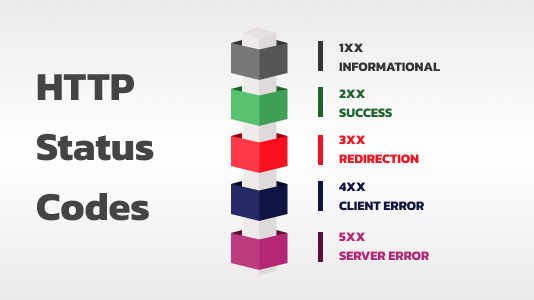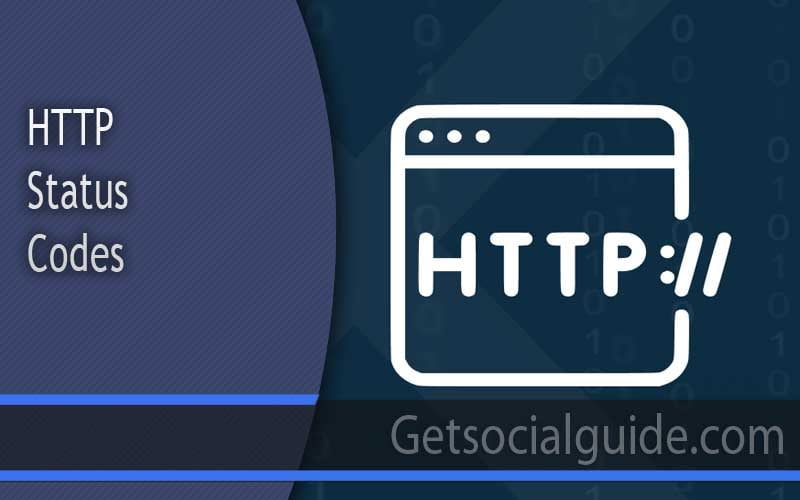HTTP Status Codes: The Full List [And How to Handle Them]
What are HTTP status codes?
HTTP status codes are three-digit numbers that communicate the status of a client’s request to a server. These codes are a fundamental part of the internet infrastructure, and they help to ensure that web servers and browsers can communicate effectively. In this article, we’ll dive into the world of HTTP status codes, what they mean, and how they can impact your website’s SEO.
HTTP status codes are the responses that a server sends to a browser’s request when a website is accessed. They are represented by a three-digit code, known as the HTTP status code. These codes are the way in which the server communicates with the browser to let it know whether everything is working properly, if there’s an issue, or if a redirection is necessary.

Understanding HTTP status codes is essential for diagnosing site errors quickly and reducing downtime. Moreover, these codes can also help search engines and users access a site. For example, a 301 redirect can inform both bots and users that a page has moved permanently.
The most important status codes for SEOs
It is crucial for SEO professionals and website owners to be familiar with the status codes that have the most significant impact on SEO. For example, if a website displays numerous 5xx errors, it is essential to understand that this is a server-related problem. On the other hand, 4xx errors can affect the visitor’s experience, and it is vital to investigate if there were any changes to the website’s URLs or if any pages were deleted. Once the root cause of the issue is identified, one can take measures such as implementing a customized 404 page or utilizing the powerful 301 redirect to redirect visitors to the correct page.
Common HTTP status code classes:
-
Understanding HTTP Status Codes
Before we dive into the details of individual status codes, it’s important to understand what they mean in general. HTTP status codes are a three-digit number that is returned by a server in response to a client’s request. There are five classes of HTTP status codes, which are:
- Informational (100-199)
- Success (200-299)
- Redirection (300-399)
- Client Error (400-499)
- Server Error (500-599)
Each status code communicates a different message to the client, letting them know whether their request was successful or not, and why. Understanding these codes is essential for troubleshooting issues on your website, as well as ensuring that your site is properly optimized for search engines.
-
Informational Status Codes
Informational status codes are used to communicate that a request has been received and is being processed. These codes do not indicate success or failure, but rather serve as a way for the server to communicate with the client about the status of their request. The most common informational status codes are:
- 100 Continue
- 101 Switching Protocols
-
Success Status Codes
Success status codes indicate that a request was successfully processed by the server. These codes indicate that the requested resource has been located and successfully returned to the client. The most common success status codes are:
- 200 OK
- 201 Created
- 204 No Content
-
Redirection Status Codes
Redirection status codes are used to indicate that the requested resource has been moved or is no longer available at the requested URL. These codes are often used when a website has been redesigned, and URLs have been changed. The most common redirection status codes are:
- 301 Moved Permanently
- 302 Found
- 307 Temporary Redirect
-
Client Error Status Codes
Client error status codes indicate that there was an error with the client’s request. These codes are often caused by incorrect URLs or invalid input data. These codes are important to keep in mind when optimizing your website for search engines, as they can negatively impact your site’s search rankings. The most common client error status codes are:
- 400 Bad Request
- 401 Unauthorized
- 403 Forbidden
- 404 Not Found
-
Server Error Status Codes
Server error status codes indicate that there was an error with the server processing the client’s request. These codes are often caused by server overload or misconfiguration. These codes are important to keep in mind when optimizing your website for search engines, as they can negatively impact your site’s search rankings. The most common server error status codes are:
- 500 Internal Server Error
- 502 Bad Gateway
- 503 Service Unavailable
- 504 Gateway Timeout
-
SEO Implications of HTTP Status Codes
HTTP status codes can have a significant impact on your website’s SEO. For example, a 404 error can negatively impact your site’s search rankings if it’s not handled correctly. In general, it’s important to ensure that your site returns the appropriate HTTP status code for each page. This will help search engines to properly index your site and improve its overall search ranking.
Another important consideration when it comes to HTTP status codes and SEO is page speed. If your site returns a large number of HTTP status codes, it can slow down your site’s loading times. This can negatively impact your site’s search rankings




Thank you for HTTP Status Codes